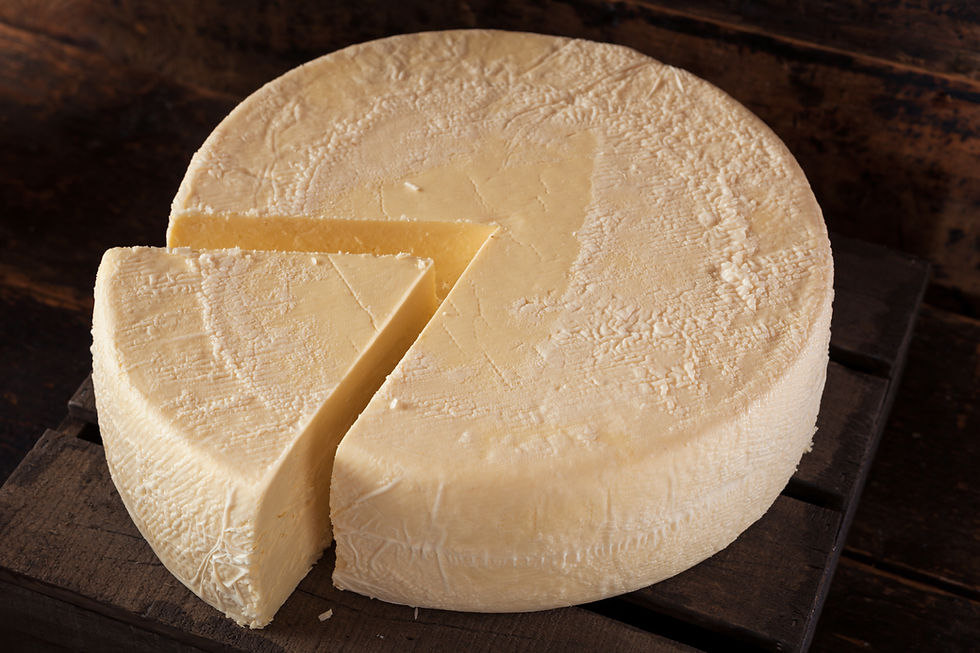Mold: Cultivation & Use in Food Fermentation
- Sylvia Rose

- Jan 21
- 6 min read
Mold is a fungus related to yeast and mildew. In fermentation mold has complex and cultivated functions. It's used in soy sauce, salami, specialty cheese and traditional treats like Indonesian oncom.

Fermentation, the timeless process of transforming food through microbial action, is a metabolic process. Microorganisms like bacteria, yeast, or mold convert sugars and starches into alcohol or acids.
This method is important to food production, enriching flavors, preserving foods, and raising nutritional content. Molds such as Aspergillus and Penicillium excel at breaking down complex carbohydrates and proteins.

In doing so, they help unlock a wide range of flavorful elements, creating complex tastes in foods. For example, the fermentation process of soy sauce can involve up to 12 different flavor compounds.
While some molds are contaminants causing food spoilage and potentially harmful mycotoxins, mold primarily of the genera Penicillium, Aspergillus, and Rhizopus, have been cultivated for centuries for fermentation abilities.
The molds actively break down complex molecules. This creates new compounds forming to fashion the texture, aroma, and flavor of various foods. It's important to know beneficial from potentially harmful molds.

How Mold Works in Fermentation
Molds produce enzymes capable of breaking down proteins, fats, and carbohydrates into simpler forms, in a process known as extracellular digestion.
Mold releases enzymes into the surrounding environment. As molds decompose starches and proteins, they release organic acids, alcohol, and carbon dioxide.
Enzymes such as amylases break down starch into sugars, while proteases release amino acids from proteins. This transformation enhances flavor and digestibility of the food.

The fermentation environment created by mold also encourages beneficial bacteria while suppressing harmful microbes. The acids produced help lower pH to naturally preserve food.
Fundamental details of the mold fermentation process include:
Protein Breakdown: Some molds, especially in cheese production, release proteases that break down proteins into amino acids. These amino acids contribute to the complex flavors and aromas found in aged cheeses.
Fat Modification: Lipases, another type of enzyme from molds, break down fats into fatty acids, which can contribute to distinct flavors and textures.
Carbohydrate Breakdown: While less common in mold-based fermentation compared to yeast, some molds break down complex carbohydrates like starch into simpler sugars, which can then be used by other microorganisms in the fermentation process.

Examples of Mold in Fermentation
Cheese
A famous use of mold in fermentation is cheese production. Penicillium molds are responsible for the characteristic blue veins in blue cheese like Roquefort and Gorgonzola.
Mold also creates the rind on cheeses like Brie and Camembert. Molds produce enzymes to ripen the cheese, creating distinctive flavors and textures.

Ripening is the aging process. Natural cheeses are made by milk coagulation, using either rennet or acid. Ripened cheeses are further matured to develop a stronger taste and an ideal texture.
Varieties like Brie, Camembert, and Roquefort depend on specific molds for their unique flavors and textures. For example, Penicillium camemberti is introduced to milk to create Brie.
As cheese matures, molds form a protective rind while generating enzymes to break down fats and proteins. This process creates creamy textures and distinct flavors to the cheese.

Soy Sauce
The classic umami flavor of soy sauce is largely due to Aspergillus molds. Soybeans and wheat are inoculated with Aspergillus oryzae or Aspergillus sojae, which produce enzymes that break down proteins and starches.
The molds produce enzymes essential for converting starches found in soybeans and wheat into simpler sugars. Once the mold has completed this conversion, yeast and bacteria begin their fermentation work.
This multi-step fermentation process can last anywhere from six months to two years, creating deeper flavors aroma. Mold helps create the characteristic dark color and complexity for which soy sauce is renowned.

Tempeh
This Indonesian creation is made by fermenting soybeans with Rhizopus molds. The mold mycelia bind the soybeans together into a firm cake, creating a unique texture.
Oncom
Oncom is a fermented food of the Sundanese cuisine of Indonesia. There are two kinds of oncom: red oncom and black oncom. The food is closely related to tempeh.
Typically, oncom is created from by-products of other food production processes. These include soy pulp leftover from tofu production or cassava tailings from starch extraction (pati singkong).

Black oncom is produced using Rhizopus oligosporus. Red oncom is made with Neurospora intermedia var. oncomensis and is the only traditional human food made from Neurospora.
Sake
While the main fermentation in sake production is done by yeast, certain molds play a crucial role in koji, derived from steamed soybeans. Aspergillus oryzae is used to break down starches in rice.
Koji refers to the cooked rice and/or soybeans inoculated with the fermentation culture Aspergillus oryzae. It's especially known in Japan.

Once starch is converted to simpler sugars (glucose and galactose), the yeast can feast. They absorb the sugars and industriously ferment them to alcohol.
Miso
Another celebrated product of fermentation, miso is a seasoning or thick paste. It also relies on koji, derived from steamed soybeans. Mixed with salt and water, koji creates a fermentation environment for bacteria and yeast.
Fermentation can last anywhere from two weeks to three years. Extended fermentation process breaks down sugars and generates enzymes to convert proteins into amino acids, which enhance miso's savory flavor.

Meat Curing
Dry-cured meats like salami and prosciutto are often surface-inoculated with mold. This contributes to their unique flavor profiles and prevents growth of unwanted bacteria.
Facts About Mold in Fermentation
Mycelia Network: Molds grow in a network of thread-like structures called mycelia. These mycelia are responsible for the visible growth on mold-ripened foods and also act as enzymes carriers.
Mold Species: The species of mold in fermentation is vital. Using the wrong mold causes off-flavors and unhealthy byproducts. Safe use of mold in fermentation requires controlled environments and careful species selection.

Ancient Practice: Use of mold in fermentation is detailed in ancient Chinese texts from around 3000 BCE, regarding fermentation of soy products.
White Rind: The white mold on Brie and Camembert creates a soft white rind while also producing enzymes that mature the cheese during the aging process.
Noble Rot: Botrytis cinerea, or "noble rot," is a mold used in making sweet wines in vineyards like those of Sauternes, France. It contributes to flavors and aromas coveted in dessert wines.

Probiotic Rich: Foods containing mold, such as miso and certain cheeses, contain probiotics, which promote digestive health and help strengthen immune system.
Flavor Complexity: Mold used in cheese and other fermented foods helps develop complex flavor profiles. Roquefort owes much of its character to the interaction between mold and the milk it's made from.
Aging Effects: The aging process often determines flavor intensity. For example, Parmigiano-Reggiano is aged a minimum of 12 months, formulating a nutty, complex cheese.

Non-Fiction Books:
Fiction Books:
READ: Lora Ley Adventures - Germanic Mythology Fiction Series
READ: Reiker For Hire - Victorian Detective Murder Mysteries


